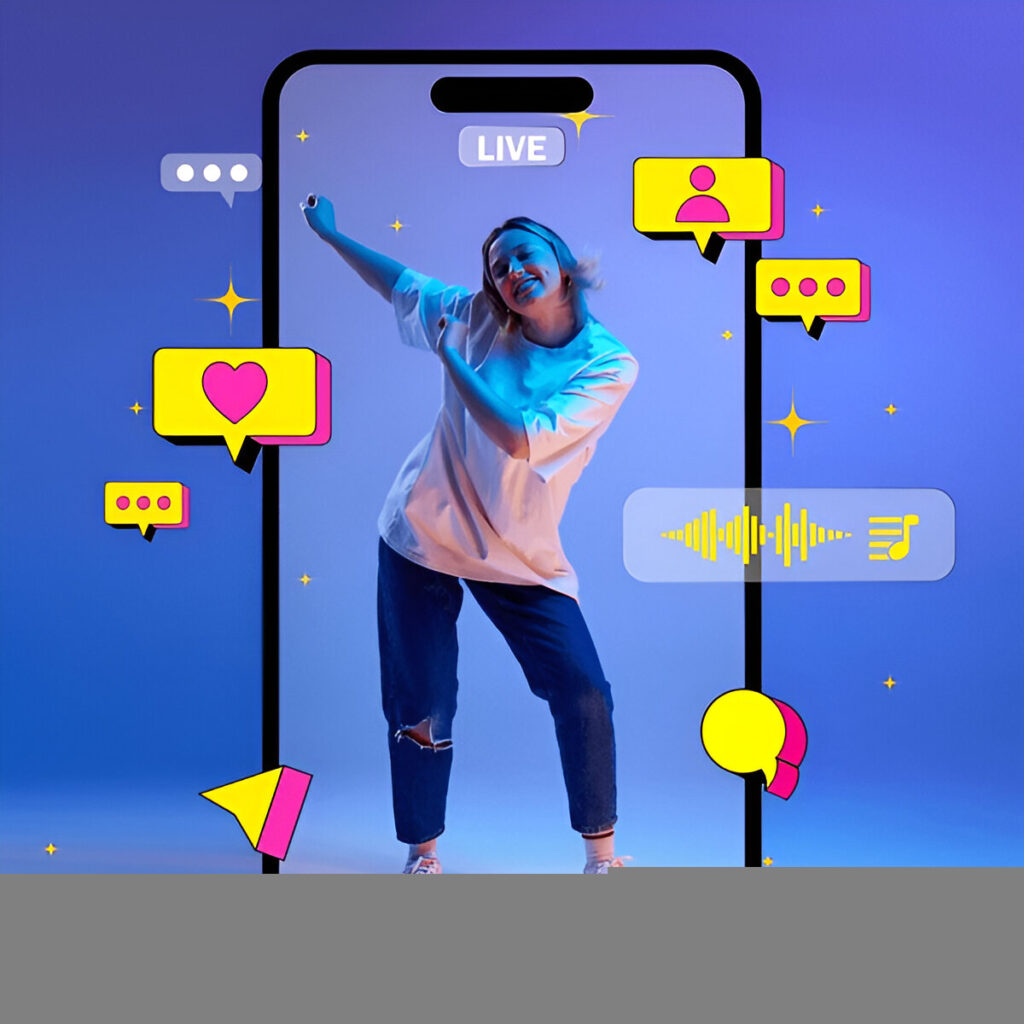Why Influencer Marketing Is Maturing

Influencer marketing has gone from the hip marketing experiment of yesterday to a mature and data-rich industry that is expected to see revenues of 24 billion US dollars as a traffic in 2025.
Yet why is influencer marketing starting to grow up? It now has more to do than just something flashing in front of your eyes and follower counts. Brands are shaping your relationships with influencers, becoming more demanding on the issue of transparency (as an influencer) and looking for meaningful returns on investment (ROI).
This blog looks at the development of influencer marketing, what drove its growth, and how it is now positioning itself to be a permanent fixture in the marketing mix.
Influencer Marketing’s Evolution
Mid-2010s influencer marketing had reached its peak-exotic. Celebrity endorsements and partnerships with influencers were based Land on speculation—and little was known of what they were actually doing. Brands threw money at influencers who had big followings, hoping for the best, while quite a few of these influencers engaged in activities such as fudging their stats regarding followers to get opportunities it was obvious that most were just dumb artists. Learn more about The Importance and Success of Influencer Marketing and How You Can Make It Work.
Today things are very different. Here are some main ways the landscape has changed over last few years:
Strategies Driven by Data
Formerly, brands mainly picked influencers who had high follower counts. Now, thanks to advanced analytical tools, marketers can access detailed data on such things as engagement rates within an audience demographic information and IP addresses where your message spreads; they get real when A BRAND MEETS ITS CONSUMER. Platforms like CreatorIQ and AspireIQ allow a more informed way for partners to evaluate their relationship based on actual information rather than any speculation.
Regulation and Transparency
The Federal Trade Commission (FTC) increased regulations, requiring disclosure of sponsored content by influencers using hashtags like #ad or #sponsored. Although not perfect, these rules have served to create trust between brands and influencers, and between influencers and users, by making sponsorships more transparent.
Long-Term Partnerships
No longer are brands pursuing just one-off posts nowadays, but proceeding to develop long-term relationships with influencers corresponding their business philosophy which can result in more genuine, and hence effective, advertising. This approach also promotes deeper brand-influencer collaborations.
Diversification Beyond Social Media
Influencers now run across a range of different platforms, including TikTok, YouTube and even LinkedIn for B2B marketing. The opportunities opening up in newer media have permitted brands to enlarge their campaigns so that they engage niche audiences through imaginative means.
What’s Fueling the Maturity of Influencer Marketing?
Several factors have contributed to influencer marketing’s ‘coming of age’.
Shift Toward Authenticity
Consumers are growing more sophisticated and more mistrustful of pushed vanguard material. They prefer influencers who really use and believe in the products they endorse. Brands have responded by partnering with shopkeepers if they’re known for aestheticism—even if they happen to have smaller (in number) but highly committed audiences.
This tendency opened the door to the emergence of micro-influencers (10k–50k followers) and nano-influencers (fewer than 10k followers), each of whom often engages more with his or her own audience. According to Influencer Marketing Hub’s 2033 report, these smaller-scale influencers enjoy engagement rates from 8–10% as opposed to only 1–3%. For comparison, the engagement rate for mega-influencers is just 1–3%.
Performance-Based Models
The era is past when brands were able to pay enormous sums for a single post without any discernible results. Nowadays, with performance marketing as its main principle of operation, influencer advertising remunerates on a pay-per-result basis with such outputs as clicks, conversions and sales. Affiliated marketing programs and traceable discount codes enable brands to determine just what effect each individual influencer has had on a given promotion—so that accountability in partnerships becomes clearer as well.
On the Benefits of Long-Term Cooperation
The more sophisticated influencer marketing becomes, the better it is for companies, consumers and creators.
For Brands
Because they more efficiently reach their target audience, campaigns can be optimized to yield a greater ROI. Businesses can turn long-term collaborations into opportunities for co-creation with the help of this feature. Connecting businesses better to both niche and mainstream markets can enhance their market position and ability to appeal.
For Consumers
With content that is more relatable than traditional advertising, influencer-generated products present a genuine interest in transparency and authenticity. Consumers are introduced to truly useful products and less “fake advertising.”
For Influencers
Influencers also benefit from more genuine and open partnerships. They can use every opportunity to work with brands that align with their audience and personal identity, maintaining the trust and credibility they have built up.
Challenges in the Changing Scenario
While influencer marketing has grown up a lot, it’s still a work in progress.
Finding the Right Partners
Even with sophisticated technology at one’s command, finding influencers who will resonate with a brand is still a challenge. Mistakes can lead to wasted resources and lost trust.
Advances in AI and Technology
Artificial intelligence is used by influencer marketing platforms to match brands with influencers who reach the same audience as they do or work in related fields and can help to achieve their goals. Platforms like Heepsy or Traackr can scan through millions of profiles and pick out all of the most suitable partners, reducing time and effort for the selection process.
AI also lets businesses estimate in advance how well an influencer partnership might work.
Integrating with Multi-Channel Strategies
Influencer marketing is no longer a standalone. Companies now integrate it seamlessly into multi-channel marketing strategy that revolves around social media, mailing lists, and even TV. For example, an influencer might use an online teaser campaign to launch a new product, timed to coincide with the store launch and emails that go out to VIP customers.
Advantages of Late-Stage Influencer Marketing
The greater sophistication of influencer marketing is a boon for brands, consumers and creators alike.
For Businesses
The target audience is reached more effectively, campaigns are better adapted to ROI, and long-term collaborations can be platforms of co-creation. Companies can bridge both the mainstream markets and niche ones, expanding their reach and their customer base too.
For Consumers
With an emphasis on transparency and authenticity, consumers are confronted by genuinely useful products rather than “fake advertising.” Influencer-generated content seems to speak more directly to people than traditional ads.
Content Saturation
So many brands have turned to Instagram’s influencer marketing, and such a great surge in content can cause audience fatigue. For such a cacophony, making single campaigns stand out at all is quite difficult.
Managing Authenticity
Despite the trend to pride it for its truthfulness, there are still some influencers who put money ahead of real endorsements. Brand must be on top of the publicity for partner carefully, and remain vigilant.
The Future of Influencer Marketing
Looking into the future, influencer marketing will continue to mature and diversify in exciting ways. Here are several trends to anticipate:
AI-Driven Customization
AI will play an important role in the future of influencer marketing, especially when campaigns are aimed at niche audiences. Brands will use AI to make the content they produce even more personal, in order to attract specific consumer segments.
Focus on Community Building
In the near future, success will come from creating communities rather than selling goods. Both those who are influenced and brands will prioritize the building of interactive, devoted audiences.
Virtual Influencers
That’s right. AI powered virtual influencers are becoming a reality and gaining in popularity. These “avatars” can be custom-designed to match a brand’s message without all the hassle of working with flesh-and-blood talent.
Evolving Metrics
Brand will want even more sophisticated attribution models in the future so that they can measure the nuances of influencer impact, from raising brand sentiment to bringing in long-term customer loyalty.
Make Influencer Marketing Work for You
While influencer marketing has matured, it’s not time to take a leisurely approach. For maximum benefit, brands must keep up in a proactive, informed and creative way.
If you’re looking to take your influencer marketing campaigns to the next level, start off by leveraging the latest tools and practices in order to build meaningful and impactful partnerships.
It’s time to get over seeing influencer marketing as the fashionable “and if you a chance” No. It’s now an essential strategy for glory and customer loyalty time.





